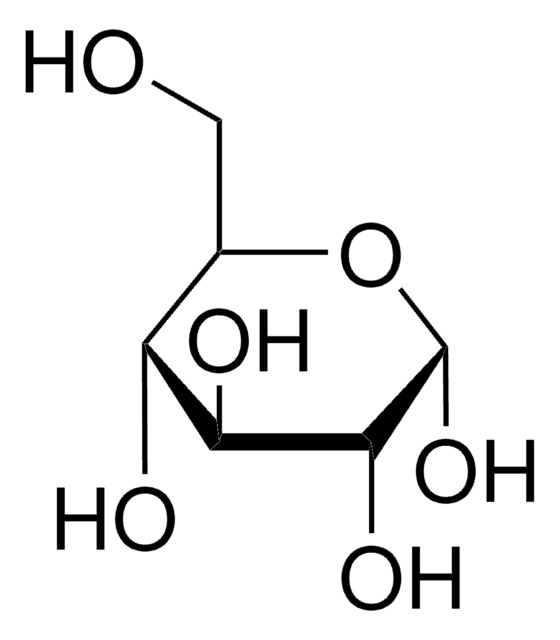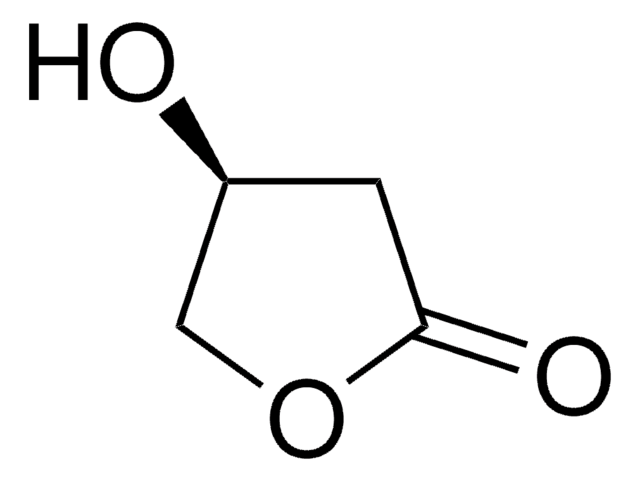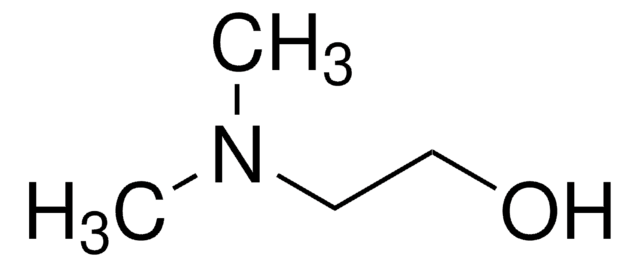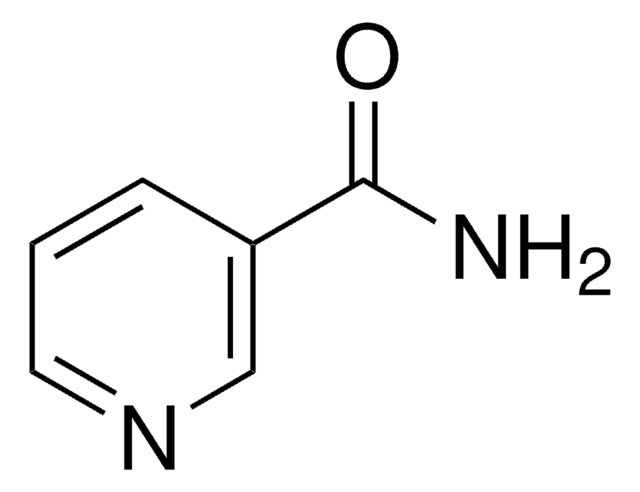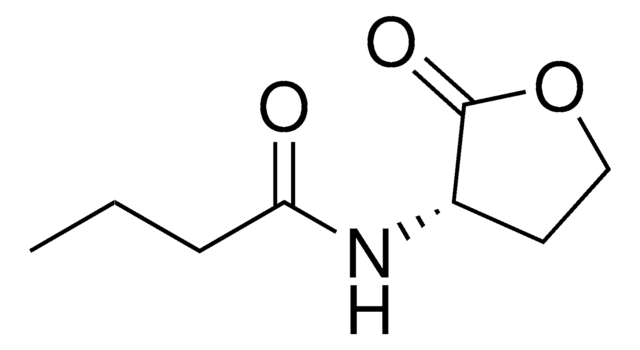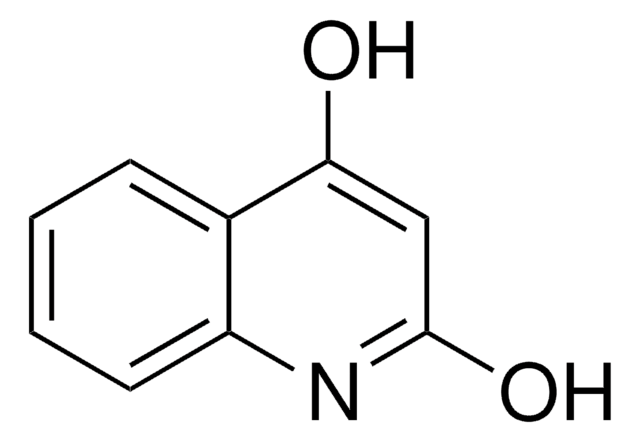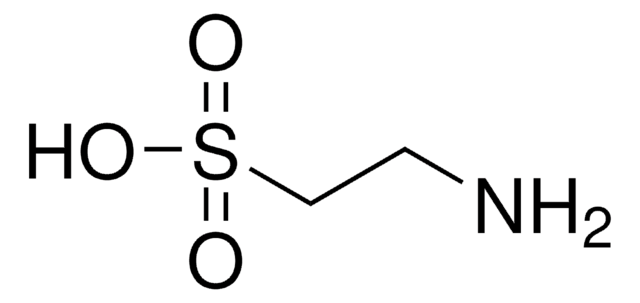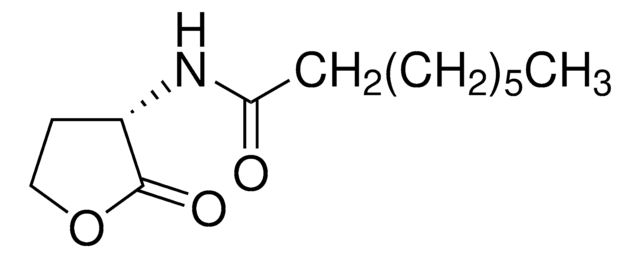所有图片(1)
About This Item
经验公式(希尔记法):
C16H21NO2
CAS号:
分子量:
259.34
MDL编号:
UNSPSC代码:
12352005
PubChem化学物质编号:
NACRES:
NA.25
推荐产品
质量水平
方案
≥96.0% (HPLC)
表单
powder
储存温度
−20°C
SMILES字符串
CCCCCCCC1=C(O)C(=O)c2ccccc2N1
InChI
1S/C16H21NO2/c1-2-3-4-5-6-11-14-16(19)15(18)12-9-7-8-10-13(12)17-14/h7-10,19H,2-6,11H2,1H3,(H,17,18)
InChI key
CEIUIHOQDSVZJQ-UHFFFAOYSA-N
一般描述
2-庚基-3-羟基-4-喹诺酮可作为细胞间信号发挥作用。
应用
群体感应是细菌根据其种群密度来协调活动的信号系统。该系统涉及细菌之间通过细胞受体交换信号分子。庚基-3-羟基-4 (1H)-喹诺酮 (PQS) 是一种群体感应调控的毒力因子,用于诱导和研究铁清除相关等毒力基因的调控。
包装
无底玻璃瓶。内容物在插入的熔锥内。
危险声明
危险分类
Aquatic Chronic 4
储存分类代码
11 - Combustible Solids
WGK
WGK 3
闪点(°F)
Not applicable
闪点(°C)
Not applicable
E C Pesci et al.
Proceedings of the National Academy of Sciences of the United States of America, 96(20), 11229-11234 (1999-09-29)
Numerous species of bacteria use an elegant regulatory mechanism known as quorum sensing to control the expression of specific genes in a cell-density dependent manner. In Gram-negative bacteria, quorum sensing systems function through a cell-to-cell signal molecule (autoinducer) that consists
Stephen P Diggle et al.
Chemistry & biology, 14(1), 87-96 (2007-01-27)
Pseudomonas aeruginosa produces 2-heptyl-3-hydroxy-4(1H)-quinolone (PQS), a quorum-sensing (QS) signal that regulates numerous virulence genes including those involved in iron scavenging. Biophysical analysis revealed that 2-alkyl-3-hydroxy-4-quinolones form complexes with iron(III) at physiological pH. The overall stability constant of 2-methyl-3-hydroxy-4-quinolone iron(III) complex
Doreen S W Hooi et al.
Infection and immunity, 72(11), 6463-6470 (2004-10-27)
Pseudomonas aeruginosa releases a spectrum of well-regulated virulence factors, controlled by intercellular communication (quorum sensing) and mediated through the production of small diffusible quorum-sensing signal molecules (QSSM). We hypothesize that QSSM may in fact serve a dual purpose, also allowing
Jintae Lee et al.
Microbial biotechnology, 2(1), 75-90 (2009-01-01)
Indole is an extracellular biofilm signal for Escherichia coli, and many bacterial oxygenases readily convert indole to various oxidized compounds including 7-hydroxyindole (7HI). Here we investigate the impact of indole and 7HI on Pseudomonas aeruginosa PAO1 virulence and quorum sensing
Jin-Hyung Lee et al.
Environmental microbiology, 13(1), 62-73 (2010-07-24)
Intercellular signal indole and its derivative hydroxyindoles inhibit Escherichia coli biofilm and diminish Pseudomonas aeruginosa virulence. However, indole and bacterial indole derivatives are unstable in the microbial community because they are quickly degraded by diverse bacterial oxygenases. Hence, this work
我们的科学家团队拥有各种研究领域经验,包括生命科学、材料科学、化学合成、色谱、分析及许多其他领域.
联系技术服务部门